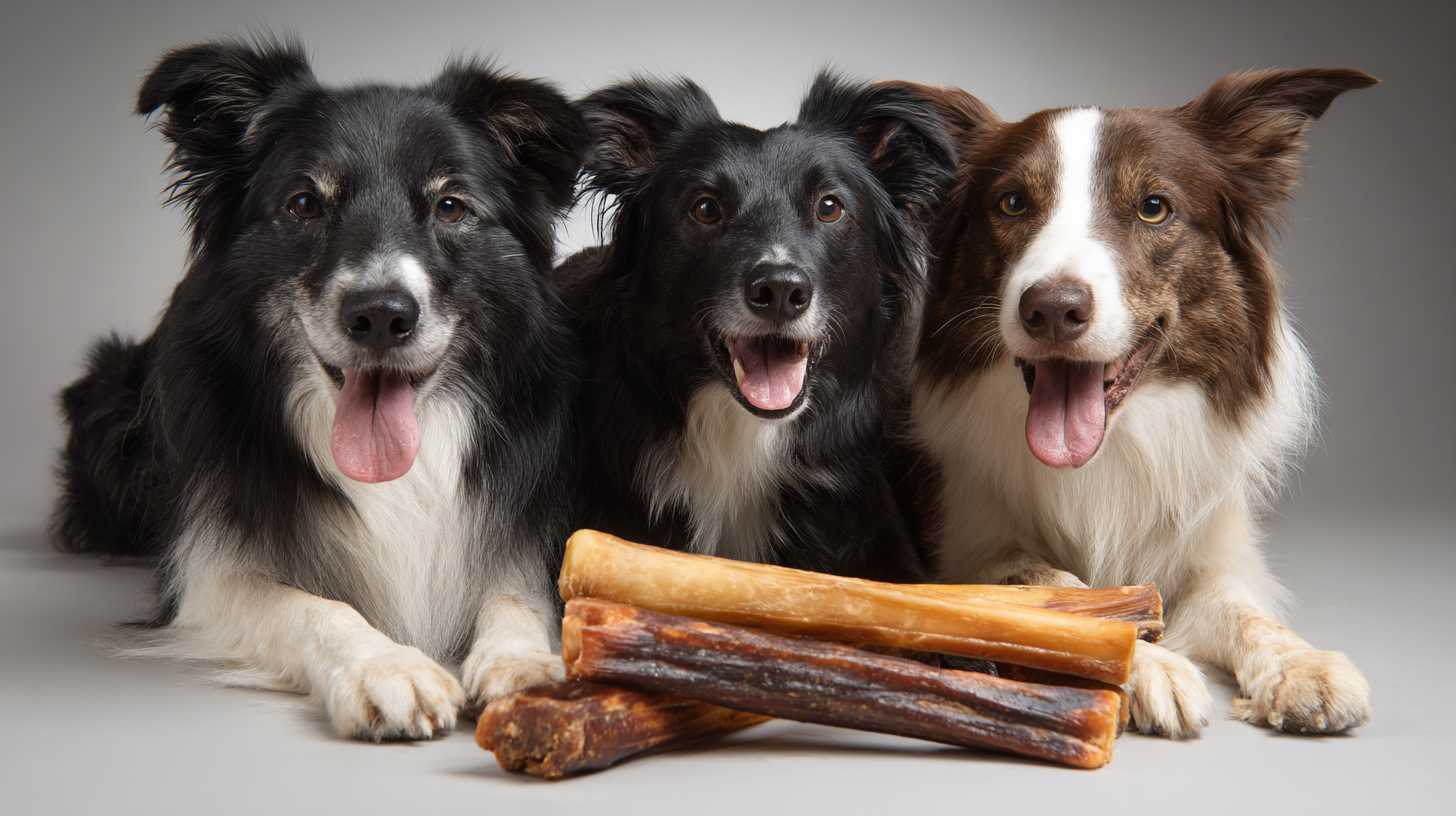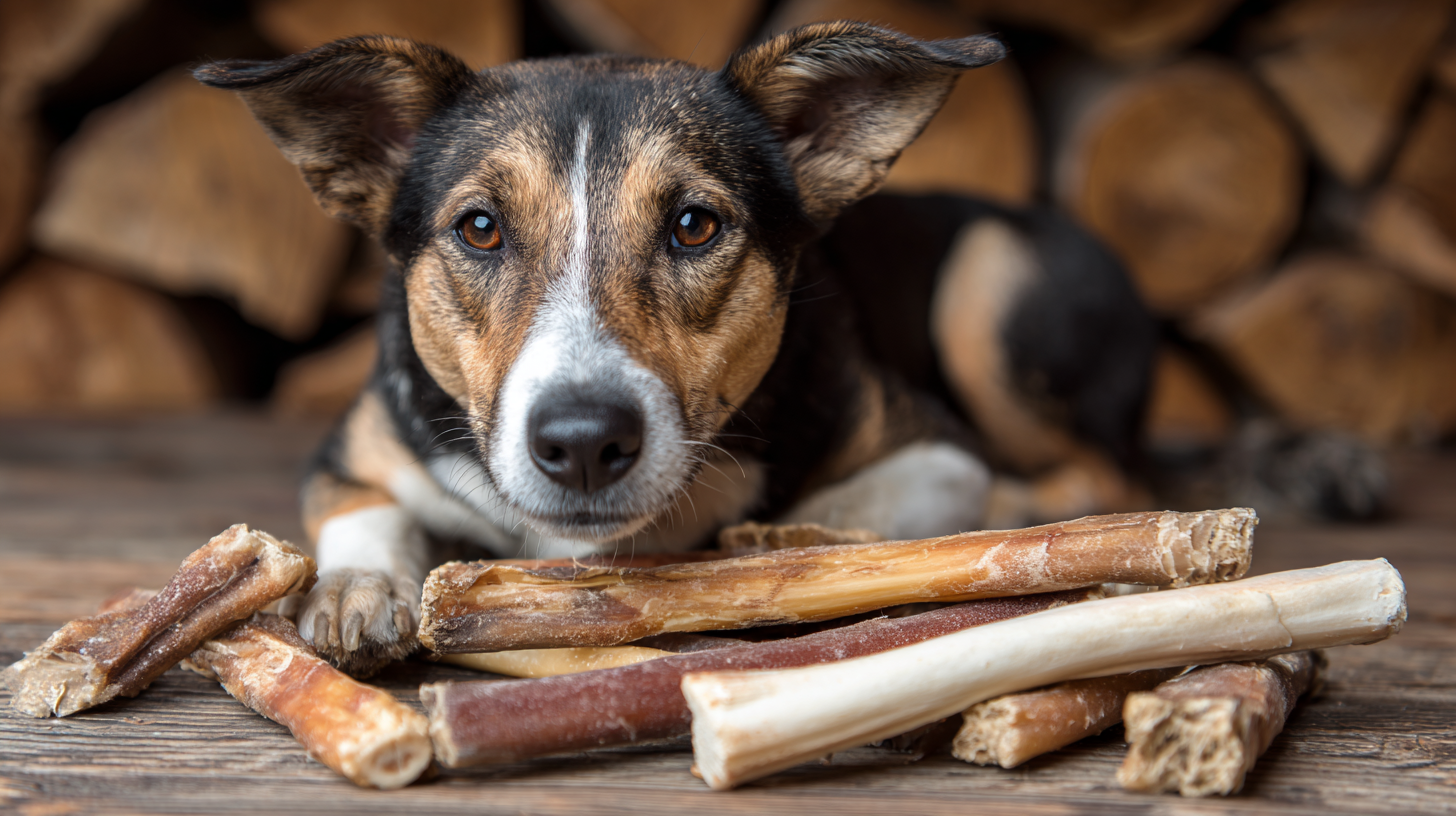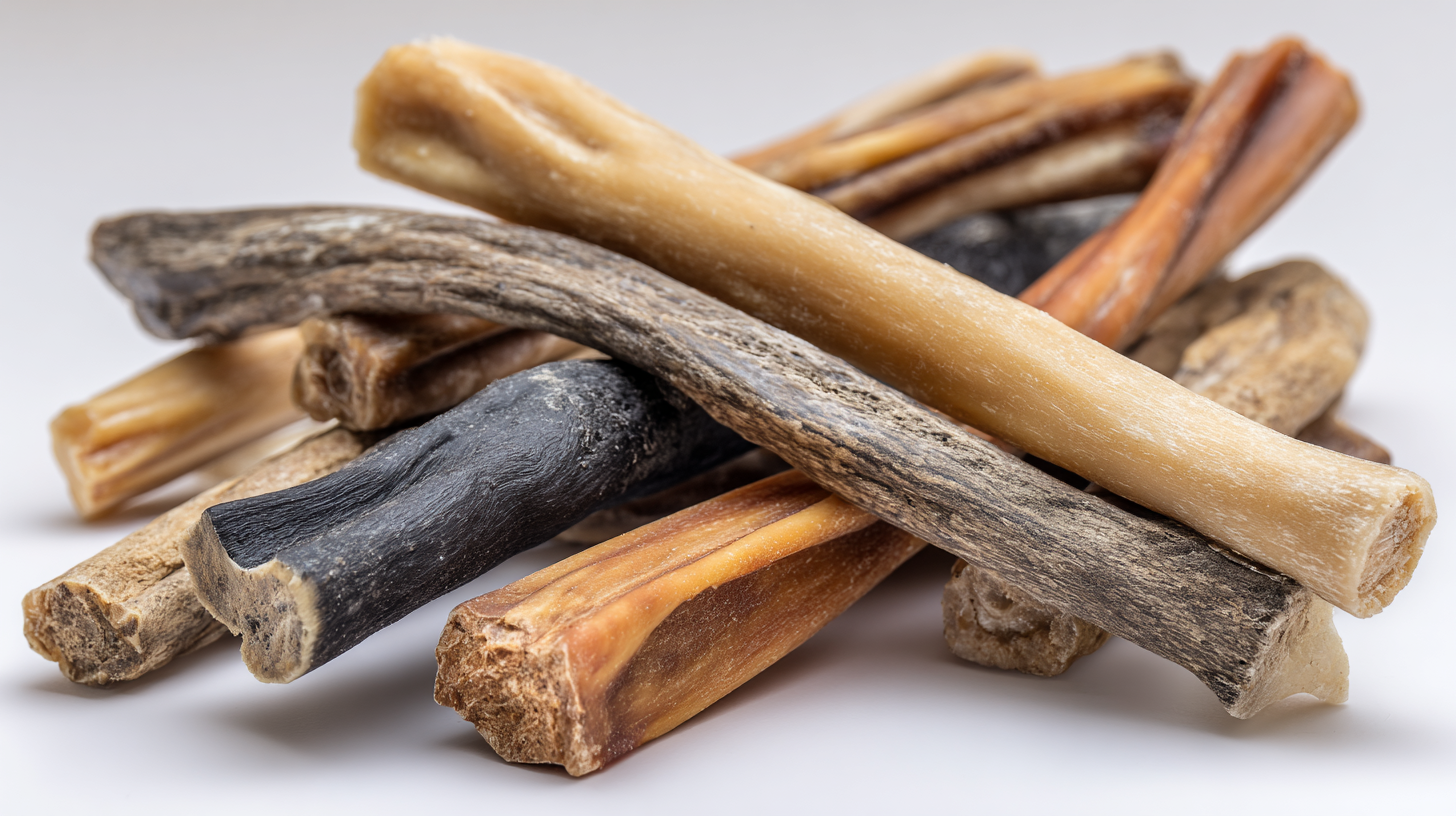As pet owners increasingly prioritize natural and healthy options for their furry companions, the demand for Natural Dog Chews has surged in recent years. According to a report by Grand View Research, the global pet chew toys market is expected to reach USD 4.58 billion by 2025, with a significant portion attributed to natural chews that cater to a dog's instinctual behaviors and dental health needs. These natural alternatives come in a variety of forms, from rawhide and bones to plant-based options, each offering unique benefits and suitability depending on a dog's age, size, and chewing habits. This guide aims to explore the diverse types of Natural Dog Chews available in the market, highlighting their characteristics, ideal uses, and helping pet owners make informed decisions that promote their dogs' overall well-being.

The global landscape of natural dog chews is rapidly changing, especially with the rising interest in products like Nepali Chhurpi, known for being one of the hardest cheeses available. As producers and exporters from Nepal set their sights on the US market, the importance of import and export certifications becomes paramount. These certifications not only ensure compliance with stringent health and safety standards but also reassure consumers about the quality and sourcing of the products they are purchasing.
In the context of the broader pet food market, understanding the dynamics of international trade is crucial. The recent USDA FAS report on the pet food market in China highlights trends that may impact the supply chain for natural dog chews. As more international players enter the US market and competition increases, maintaining certification standards will be vital for brands to build trust and establish a foothold. This is particularly important as consumers increasingly seek transparency about the origins and safety of the products their pets consume.
The pet industry is experiencing significant growth, and the natural dog chews segment is no exception. With a projected value reaching USD 52,449.14 million by 2034 and a compound annual growth rate (CAGR) of 4.72%, understanding the key regulatory standards governing these products is crucial for manufacturers and marketers alike. Compliance with regulations not only ensures product safety and quality but also plays a pivotal role in gaining market access. Companies selling natural dog chews need to be aware of the specific standards set by governing bodies, which vary across different regions.
The impact of regulations on market accessibility extends beyond mere compliance; it influences product formulation, labeling, and sales strategies. For instance, in markets influenced by stringent health policies, natural dog chew producers must ensure transparency in ingredient sourcing and processing methods. This not only helps in meeting legal requirements but also fosters consumer trust, enabling businesses to build a loyal customer base. As the market landscape continues to evolve, staying updated on regulatory changes will be essential for capitalizing on growth opportunities in the burgeoning pet food economy.
| Type of Dog Chew | Main Ingredients | Ideal Uses | Key Regulatory Standards | Market Access Impact |
|---|---|---|---|---|
| Bully Sticks | Beef muscle | Durable chew for aggressive chewers | USDA standards | High demand, regulated imports |
| Rawhide Chews | Rawhide from cattle | Dental health and chewing exercise | FDA guidelines | Varies by country; potential for bans |
| Antler Chews | Deer or elk antlers | Long-lasting, nutrient-rich | Sustainable sourcing standards | Growing popularity, local sourcing |
| Vegetable-Based Chews | Peas, corn, potatoes | For dogs with allergies | Non-GMO and organic certifications | Niche market, increasing demand |
| Fish Skin Chews | Dehydrated fish skin | Omega-3 supplements, dental health | Marine product regulations | Growth in seafood product sector |
In the production of natural dog chews, quality assurance plays a pivotal role in ensuring the safety, nutritional value, and overall integrity of the products. The journey of dog chews from sourcing ingredients to final packaging involves rigorous testing and adherence to safety standards. Manufacturers must prioritize transparency by providing information on sourcing and production processes, allowing pet owners to make informed choices about the chews they select for their furry companions.
When choosing natural dog chews, consider looking for certifications from recognized organizations that validate the quality of the products. Tip: Always check for ingredient lists that avoid artificial additives and focus on sourcing from reputable suppliers. The chew should be made from natural components like bully sticks, fish skins, or dehydrated fruits, ensuring a wholesome treat for your dog.
It's also essential to monitor your pet's health and eating habits when introducing new chews. Tip: Start with smaller sizes or softer options to gauge your dog's reaction and ensure they don't have any sensitivities to specific ingredients. By doing so, you not only promote your dog's dental health but also enhance their chewing experience with safe, high-quality natural chews.
The global market for natural dog chews has been experiencing significant growth, fueled by increasing consumer awareness regarding pet health and wellness. According to a report by Grand View Research, the natural dog chew market is projected to reach $1.67 billion by 2027, expanding at a compound annual growth rate (CAGR) of 6.4%. This rise reflects a growing trend among pet owners seeking healthier and more sustainable options for their canine companions. Furthermore, certification requirements for natural dog chews are becoming more stringent as regulatory agencies aim to ensure product safety and quality.

Tip: Always read ingredient labels carefully—opt for single-ingredient chews such as dehydrated meat or vegetables, which are less likely to contain preservatives or artificial flavors. Additionally, be cautious about the size and hardness of the chew to match your dog’s breed and chewing behavior, reducing the risk of dental issues or choking hazards.
As consumers become increasingly aware of their pets' health, the demand for natural dog chews is witnessing a significant rise. Trends indicate that pet owners are now prioritizing high-quality, sustainably sourced ingredients, reflecting a broader shift towards wellness and transparency in pet nutrition. Brands that comply with stringent regulations and provide clear information about their sourcing and manufacturing processes are likely to gain consumer trust and loyalty.

When choosing natural dog chews, it's essential to consider your dog's unique needs, size, and chewing habits. For instance, tougher chews may be better suited for larger breeds, while softer options could be ideal for puppies or senior dogs with dental issues. Always supervise your pet during chew time to avoid potential choking hazards, and rotate different types of chews to keep them engaged and satisfied.
Another important trend is the growing interest in eco-friendly packaging. Consumers are looking for brands that minimize their environmental footprint, reflecting a wider commitment to sustainability. Opting for chews that come in biodegradable or recyclable packaging not only benefits the planet but also resonates with pet owners' values. As these trends continue to evolve, the future of natural dog chews looks promising and aligned with consumer preferences.